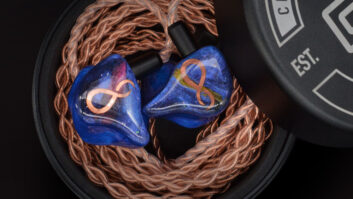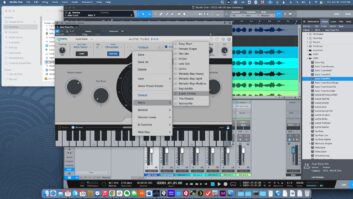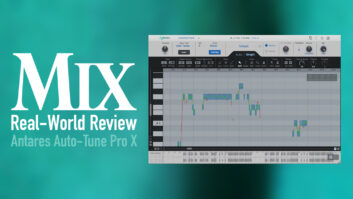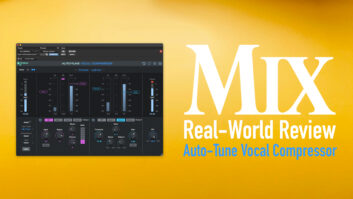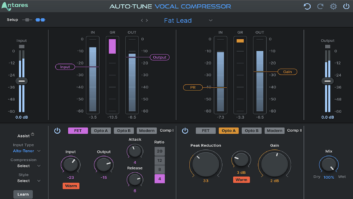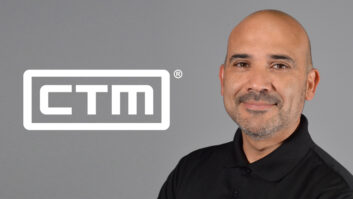Religious broadcasting has come a long way since Pittsburgh radio station KDKA aired the very first service on January 2, 1921, from Calvary Episcopal Church. Almost a century later, it’s now commonplace for houses of worship to use a variety of audio-video technologies to spread the word, both worldwide over the airwaves and the internet and locally over network infrastructures.
For any house of worship, connection to its community is key. As Carey Nieuwhof, author, blogger and founder of Toronto’s Connexus Church, has written, “If the change inside the church isn’t equal to or greater than the change outside our walls, irrelevance is inevitable.” Recognizing this, over the past 15 or 20 years, a great many churches have implemented broadcast, streaming and archiving services (the latter enabling time-shifted viewing on demand from the church’s website, YouTube and other platforms), often while also expanding onto multiple satellite campuses, the better to reach a wider community of fellow worshippers.
Broadcasting, whether to TV sets, internet-connected devices or remote campuses, can offer significant benefits to a faith organization. Above all, perhaps, is its ability to extend the reach of a church beyond its seating capacity all the way to the farthest corners of the globe. It also allows those unable to personally attend services, including house-bound and traveling parishioners, as well as those outside the community, to stay in touch with their church.
Valley Creek Church in Flower Mount, TX sports a Yamaha CL-1 mixing console in its streaming audio room.

The complexity of the broadcast infrastructure and the breadth of outlets to which the message is being broadcast can vary tremendously. At the top of the list are locations such as the 16,000-seat Lakewood Church in Houston, TX, and the Church of Jesus Christ of Latter-Day Saints’ Temple Square in Salt Lake City, UT, which includes the 21,000-seat Conference Center. The two locations feature top-notch facilities variously outfitted with SSL, API, Studer and Euphonix mixing consoles, broadcasting worldwide via major television networks and satellite radio. Less ambitious churches may house a separate suite with a dedicated broadcast/webcast mixing console generating feeds for local TV and radio as well as the web and other campuses. For smaller churches, webcast and remote audio feeds may simply be generated from aux or matrix outputs on the front-of-house desk.
Broadcast and multi-site campus streaming go hand-in-hand, of course; both use the same audio and video systems to display, capture and disseminate the message to any viewing platform and location—TV, online, across town or simply next door to an overflow room. The feeds being distributed might include live camera video of the proceedings and pre-produced video packages, as well as text, such as Bible verses and lyrics, being sent to display screens at each location.
Multi-site churches have proliferated in recent years. Once associated with megachurches, the concept has now been embraced nationwide by churches large and small. In 2014, Leadership Network found that there were 8,000 multi-site churches in the U.S. Of the country’s 100 largest churches, only 12 were operating from a single campus, the organization reported.
“It’s hard to find churches that aren’t streaming or at least thinking about streaming,” says Duke DeJong, vice president, Systems Integration, for CCI Solutions in Olympia, WA. “For some, it’s outreach. We’ve got a big military base next door. There are a lot of family members overseas; [streaming is] their connection to family.”
Dedicated live or post audio mix facilities are not yet widespread, and the resources that a smaller church can commit to its broadcasts are typically limited. “Most of the churches that I’m seeing are doing whatever they can live, just because nobody has the time to try and remix it after a service and get it online,” reports DeJong. “Most of these churches are doing three, four services a weekend already, so the guys are toast by the time they are finished.”
Unfortunately, church clients often focus more on the visual elements of a system and leave the audio aspects to the last minute, as DeJong elaborates: “Often, you just have a house feed—and very few people have a good-sounding house feed. Most church acoustics aren’t really good enough, so what ends up coming out of the house mix ends up heavily influenced by the room and, frankly, it sounds terrible.”
The well-appointed production room at Valley Creek Church.

Ben Cating LEED AP, senior consultant–VP at Idibri in Dallas, TX, has observed another factor that is impacting the quality of the typical broadcast mix. “The size of these venues is getting smaller and smaller, and we’re seeing that they are just taking a left/right mix, or aux mix, from the main console that goes on the stream. It may be tweaked slightly in the video room, making sure there’s the right amount of ambient sound or other microphones mixed in properly. But, pretty much, the stage mix is going out for the streaming feed.”
Cating continues, “It’s about the top eight-percent, the larger churches, that have a dedicated mixdown suite. Some of our medium–to-larger clients do have a separate mixdown suite; they’re mixing down several matrices from the main mix and getting the feed that way.”
Even some of the smallest churches are webcasting, Cating has observed. “I talked to a small church down in Houston. They’re building their first building—they meet in a high school now—and they’ve got a camera that they just set up and stream. Their new room is going to seat 150, maybe 200 people, so it’s a tiny, tiny place, and they’re streaming now. It’s pretty common.”
The trend for more and more faith organizations to become involved with webcasting and multi-site streaming has also been enabled by the growth in dedicated services offered by companies such as DaCast, FaithNetwork, Haivision, Living As One, Streambox and Stream-Two. “Essentially, you just give them the URL for your camera and they handle the streaming and archiving all together,” says Cating.
These cloud-based services typically also offer DVR capabilities, allowing the sermon delivered at the main location to be delayed and presented at a later service on a satellite campus, if a real-time broadcast doesn’t fit the schedule at the remote location. The link may even be bi-directional. Streambox, for instance, in addition to its point-to-multipoint solution for streaming to one or more satellite locations, also offers a codec that enables the main sanctuary and a satellite church to share audio and video and interact with each other in real-time through what is essentially a teleconferencing system.
Nathan Williams, technical director at Victory World Church (VWC), a multi-site church located in Norcross, GA, uses a DiGiCo SD7 at the facility’s FOH position.

Having a dedicated audio console allows a church to more appropriately mix for broadcast while also creating feeds tailored specifically for satellite campuses and other destinations. A recent CCI project at the multi-site Sandals Church in Southern California, for example, includes Yamaha CL consoles at FOH, monitors and in a broadcast audio mix and video production suite. “They’re creating the mix for the recording feed as well as the live streaming,” says Mark Pearson, CCI’s project lead for Sandals. “They stream live to the internet, they record and they use Streambox to stream to their other two campuses, which capture and DVR the service.”
Victory World Church (VWC), a multisite church located in Norcross, GA, just outside of Atlanta, includes broadcast capabilities to rival some television stations. “We have a DiGiCo SD5 console in our broadcast room,” says technical director Nathan Williams. “We use that for anything audio-for-video. For archive purposes, we record to hard drives or to different servers—we have a Grass Valley K2, an Omneon and a PDS server. We also transmit over fiber live to our satellite campuses, which are both 25 miles away from the main campus, and we have an overflow campus on the property; that’s fed over local fiber inside of the building. And we transmit over the web using Haivision.”
The intra-campus links are provided by The Switch, owned and operated by Beers Enterprises, which provides video switching and local fiber circuit services. “It’s managed dark fiber,” Williams explains. “We can tailor what we send down that pipe or not.”
Using a Ross Acuity video switcher and Miranda router, the main campus can provide the specific camera shots and angles requested by the satellite campuses, he adds. “The campus in downtown Atlanta is in an old theater, a smaller room, so they don’t need as many of the distant shots and keep it more like a head-to-toe shot.”
The SD5 is networked to an SD7 at FOH and another SD5 at monitors over an Optocore loop. The dedicated broadcast audio engineer can pick off any inputs from the SD Rack, including audio in the video feeds, de-embedded and embedded via an Optocore DD4MR MADI interface, says Williams.
The audio mix to the satellite campuses can vary, he continues. “Typically, we do a time flip of a sort using the K2. They get it in real-time, and then they’ll play it after the band is done playing, so we’re within five minutes of when the event took place when they play it. But this past weekend, we were completely live at our campuses. They even used the band mix from us.”
The webcast is typically live. “We’ll archive the speaking part. We don’t normally put up the music unless it was live,” he says.
